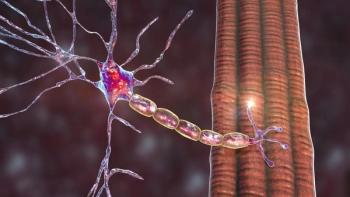
FDA Releases Guidance on CGT Manufacturing Changes, Good Cause for PMR Noncompliance
The guidance outlines recommendations for managing and reporting CGT manufacturing changes and PMR noncompliance.
The FDA has released
Specifically, the manufacturing guidance focuses on the management and reporting of manufacturing changes for investigational and licensed CGT products and comparability studies to assess these changes.
“Manufacturing and control of CGT products can often be affected by unique factors, including 36 limited knowledge of product quality attributes, limited manufacturing experience, limited and 37 variable starting materials, limited amount of product, complex manufacturing processes, and 38 limited product shelf life. These aspects of CGT products may make the management of 39 manufacturing changes more challenging than for other biological products,” the FDA stated in the manufacturing guidance.1
The manufacturing guidance advised planning risk management strategies to assess potential risks caused by manufacturing changes. Another facet to consider with manufacturing changes is how they can affect the stability/delivery of the CGT product and thus, comparability studies are needed to assess these factors. In addition to assessing stability/delivery comparability, preclinical comparability studies may be needed if the analytical studies are not enough to demonstrate a comparable product. Furthermore, clinical studies may be needed if comparability cannot be established through analytical or preclinical studies.
READ MORE:
Any manufacturing changes must be reported to the FDA, this may be completed by amending an existing investigational new drug application (IND) or submitting a new IND if the new product is fundamentally different, with a different starting material, cells, vector, transgene, control elements, target, or other integral characteristics. For licensed products, changes must be made to the existing biologics license application.
The manufacturing guidance also touched on tissue-engineered medical products that incorporate viable cells and scaffolds, with cells either seeded onto the scaffold’s surface or embedded within the scaffold, which are often intended to mimic the in vivo cellular microenvironment. The FDA listed similar requirements to other CGT products, but emphasized thoroughness with these products.
The PMR guidance focuses on determining good cause for noncompliance with PMR trials. The guidance does not apply to pediatric studies required under section 505B, studies required under accelerated approval, or trials required for approvals based on animal studies. Section 505(o)(3) authorizes the FDA to require certain PMR studies and clinical trials for prescription drugs at the time of approval or after approval if FDA becomes aware of new safety information. Examples of PMR non-compliance include a missed final protocol milestone, study/clinical trial completion milestone, a missed final report submission milestone, or other instances. Enforcement actions for noncompliance can include a warning latter, misbranding charges, and civil monetary penalties.
Noncompliance can be reasonable under certain circumstances, which the FDA deemsgood cause. One example is a missed milestone that couldn’t have been reasonably anticipated and factored in the original PMR timetable. The guidance emphasizes the importance of communicating with the FDA as soon as the sponsor anticipates missing a milestone, after which the FDA will determine if the missed milestone was justified. To correct noncompliance, sponsor should develop a corrective plan including actual or anticipated delays and provide a reasonable revised timetable.
“An applicant required to conduct a PMR under section 505(o)(3) must provide certain information to FDA, including a timetable for study or clinical trial completion and periodic reports on the status of the study or clinical trial. If an applicant fails tocomply with the timetable or other requirements of section 25 505(o)(3)(E)(ii), the applicant is in violation of section 505(o)(3), unless the applicant has demonstratedgood cause for its noncompliance or other violation,” the FDA wrote in the PMR guidance.2
REFERENCES
1. FDA. Manufacturing changes and comparability for human cellular and gene therapy products: Draft guidance for industry. July 13, 2023. Accessed July 13, 2023. https://www.fda.gov/media/170198/download
2. FDA. Postmarketing studies and clinical trials: Determining good cause for noncompliance with section 505(o)(3)(E)(ii) of the Federal Food, Drug, and Cosmetic Act guidance for industry. July 10, 2023. Accessed July 13, 2023. https://www.fda.gov/media/170187/download
Newsletter
Stay at the forefront of cutting-edge science with CGT—your direct line to expert insights, breakthrough data, and real-time coverage of the latest advancements in cell and gene therapy.













































